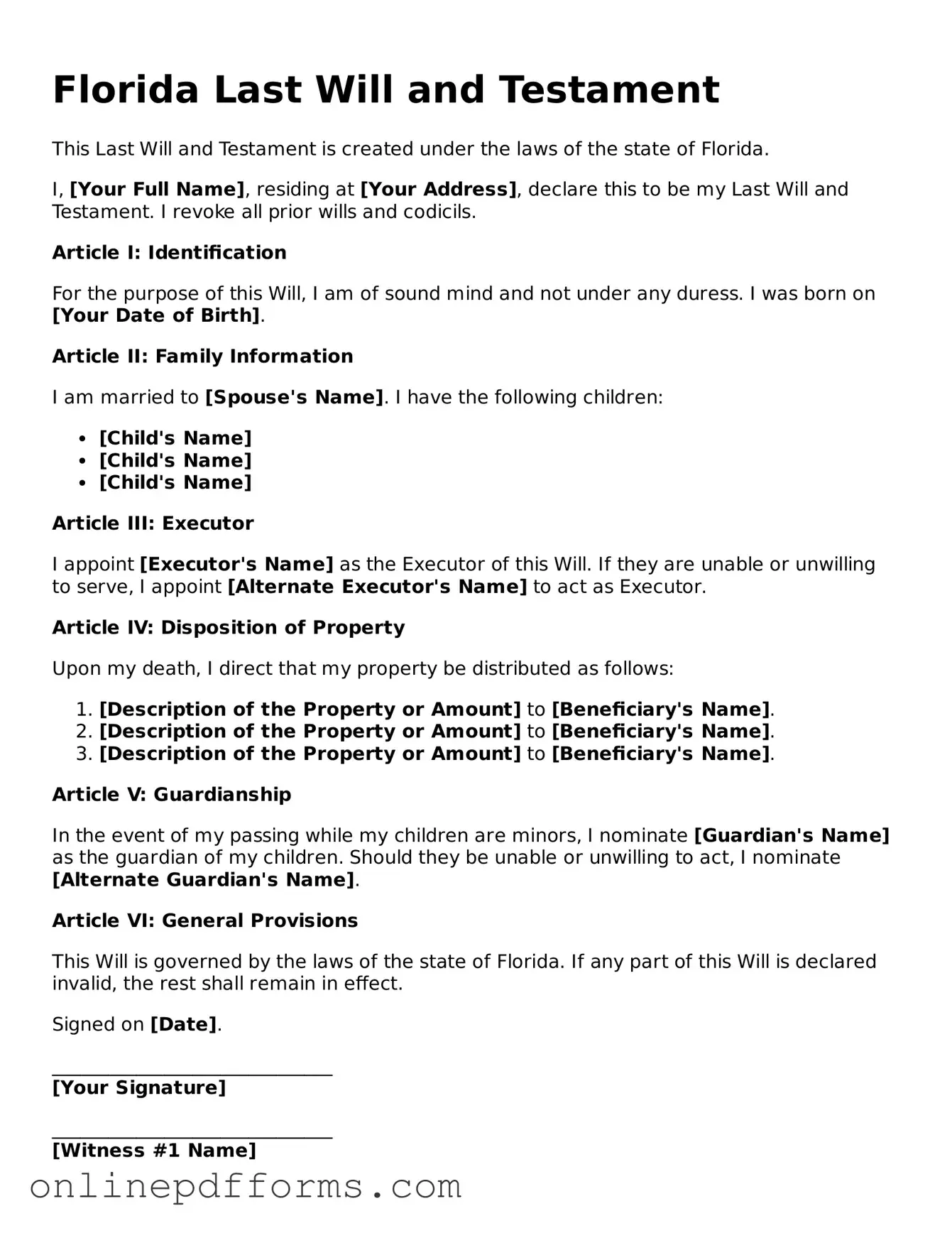Steps to Filling Out Florida Last Will and Testament
Filling out a Florida Last Will and Testament form is an important step in ensuring your wishes are carried out after your passing. After completing the form, you will need to sign it in front of witnesses to make it legally binding. Here’s how to fill out the form step by step.
- Title the document: At the top of the page, write “Last Will and Testament.”
- Identify yourself: State your full name and address. Include a declaration that you are of sound mind and legal age.
- Appoint an executor: Choose a trusted person to manage your estate. Write their name and contact information.
- List your beneficiaries: Clearly name the individuals or organizations that will inherit your assets. Specify what each person will receive.
- Include alternate beneficiaries: Consider naming backup beneficiaries in case your primary choices are unable to inherit.
- Detail your assets: Provide a brief description of your major assets, such as property, bank accounts, and personal belongings.
- Sign the document: You must sign your will in the presence of at least two witnesses. They should also sign the document, confirming they witnessed your signature.
- Date the will: Include the date when you sign the document to establish when it was created.
Once you have completed these steps, ensure that you store the will in a safe place and inform your executor where it can be found. It’s also wise to review and update your will periodically, especially after major life changes.
